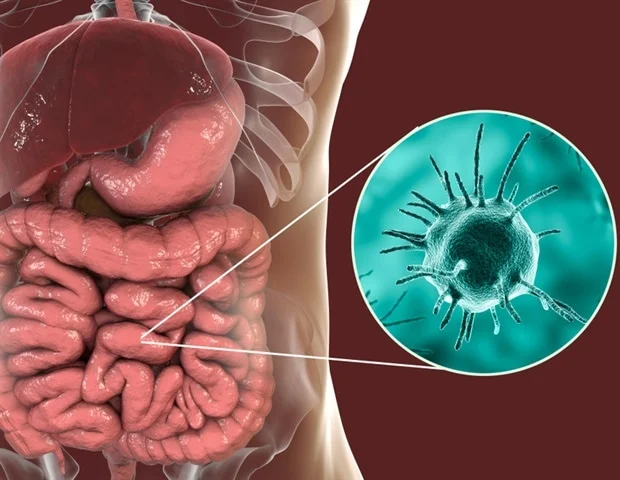Chronic intestinal amebiasis is a prolonged intestinal infection caused by the parasite Entamoeba histolytica. This condition primarily affects the colon and can lead to significant health complications if left untreated. Understanding the causes, symptoms, diagnostic procedures, treatment options, and preventive measures is essential for managing and reducing the impact of this disease.

What Is Chronic Intestinal Amebiasis?
Chronic intestinal amebiasis refers to the persistent presence of E. histolytica in the intestinal tract, causing prolonged inflammation and damage to the colon. Unlike acute amebiasis, which manifests with severe symptoms such as dysentery, the chronic form may present with milder but long-lasting symptoms that can interfere with daily life.
Causes and Transmission
The primary cause of chronic intestinal amebiasis is infection by the protozoan parasite Entamoeba histolytica. Transmission occurs through the fecal-oral route, often due to:
- Contaminated Water and Food: Ingesting water or food containing E. histolytica cysts.
- Poor Sanitation: Inadequate sanitation and hygiene practices facilitate the spread of the parasite.
- Person-to-Person Contact: Close contact with an infected person, especially in communal living environments, increases the risk.
- Travel to Endemic Areas: Visiting regions with high prevalence of amebiasis, such as tropical and subtropical countries.
Symptoms
Chronic intestinal amebiasis can exhibit a range of symptoms that vary in severity. Common symptoms include:
- Intermittent Diarrhea: Episodes of loose stools alternating with normal bowel movements.
- Abdominal Pain: Cramping and discomfort, particularly in the lower abdomen.
- Fatigue: Persistent fatigue due to nutrient malabsorption and chronic inflammation.
- Weight Loss: Unintentional weight loss caused by prolonged infection.
- Mucus and Blood in Stools: Occasional presence of mucus or blood due to intestinal inflammation and ulcers.
In some cases, the infection may progress to amoebic dysentery or extraintestinal complications, such as liver abscesses.
Diagnosis
Accurate diagnosis of chronic intestinal amebiasis is crucial for effective treatment. Diagnostic procedures include:
1. Stool Examination
Microscopic analysis of stool samples helps detect E. histolytica cysts or trophozoites. Multiple samples may be required for confirmation.
2. Serological Tests
Blood tests, such as enzyme-linked immunosorbent assays (ELISA), can identify antibodies against E. histolytica, particularly in cases with extraintestinal manifestations.
3. Molecular Tests
Polymerase chain reaction (PCR) assays are highly sensitive and specific, allowing for the detection of E. histolytica DNA in stool samples.
4. Imaging Studies
In cases of suspected complications, imaging techniques such as ultrasound or computed tomography (CT) scans can assess organ involvement, such as liver abscesses.
Treatment Options
Treatment for chronic intestinal amebiasis involves eradicating the parasite and managing symptoms. The standard therapeutic approach includes:
1. Amoebicidal Drugs
- Metronidazole or Tinidazole: These medications eliminate the active trophozoites.
- Luminal Agents: Paromomycin or diloxanide furoate target cysts in the intestinal lumen to prevent recurrence.
2. Supportive Care
- Hydration: Oral rehydration therapy to address fluid loss from diarrhea.
- Nutritional Support: Balanced diet to counter malnutrition and support recovery.
3. Treatment of Complications
Surgical intervention may be necessary in rare cases of severe complications, such as intestinal perforation or abscess drainage.
Preventive Measures
Preventing chronic intestinal amebiasis requires addressing the underlying risk factors. Effective strategies include:
- Improved Sanitation: Access to clean water and proper sewage disposal.
- Hygiene Practices: Washing hands with soap and water before meals and after using the restroom.
- Food Safety: Avoiding raw or undercooked foods and consuming only boiled or filtered water in endemic areas.
- Health Education: Raising awareness about transmission and prevention methods, particularly in high-risk communities.
Complications
Untreated or inadequately managed chronic intestinal amebiasis can lead to severe complications, including:
- Amoebic Dysentery: Persistent, bloody diarrhea with severe abdominal pain.
- Toxic Megacolon: Life-threatening dilation of the colon.
- Liver Abscess: Spread of the parasite to the liver, causing abscess formation.
- Intestinal Perforation: Perforation of the colon leading to peritonitis.